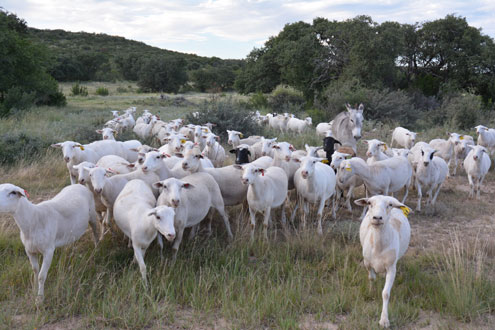SAN ANGELO – Despite declining numbers, sheep and goats continue to be in demand and fetch good prices in Texas, said Bill Thompson, Texas A&M AgriLife Extension Service economist, San Angelo.
Texas produces more sheep and goats than any other state, Thompson said. Texas produced more goats than the next 10 U.S. states combined, and the highest number of sheep.
The Texas goat market accounted for more than $122 million in sales last year, Thompson said. The five-year average for sheep sales in Texas was $111 million per year.
Sheep and goat numbers have declined slightly, around 1 percent, overall, Thompson said, but the demand for both remains strong, especially as ethnic and immigrant markets continue to expand and producer and seller logistics improve.
Thompson said the mild winter and early spring conditions likely eased the lambing and kidding season for producers.
“Prices in the lamb market are good, but not near what they were,” he said. “But the market is interesting because there are really two markets now as hair sheep have become popular.”
Rambouillet sheep traditionally dominated the market, he said. But hair sheep have overtaken them and represent two-thirds of marketings in Texas now.
Prices for both Rambouillet and hair sheep are slightly below what they were this time last year and below the five-year average but are still historically good, Thompson said. First quarter slaughter lamb prices are $2.12 per pound compared to $2.13 per pound last year.

Thompson said producers and sellers have improved the logistics of getting lambs to market for consumers conveniently over the last several years.
“They do a good job, when there is opportunity to put lambs in feedlots to run their weight up,” he said. “When buyers can pencil out profits on higher weights, they will do that.”
Thompson said the goat market is “amazing right now.”
“Prices are as strong as they were a year ago and above the five-year average,” he said. “They’ve really been on a tear the last few years.”
Kid goats are averaging $2.63 per pound and showing high demand in ethnic markets, Thompson said.
“So you have say a 50-pound goat that is bought for slaughter at $2.63 per pound, and you yield a 26-pound carcass. It’s $131 for that carcass, which seems expensive, but they’re still selling,” he said.
But Thompson said despite good prices and demand, some producers are switching from goats to hair sheep because they are more resistant to parasites and easier to handle and care for.
“Goats can be trouble,” he said. “They can be aggressive and are really good at causing damage and getting out of pens. Some producers are weighing the costs and benefits and many have switched to hair sheep.”